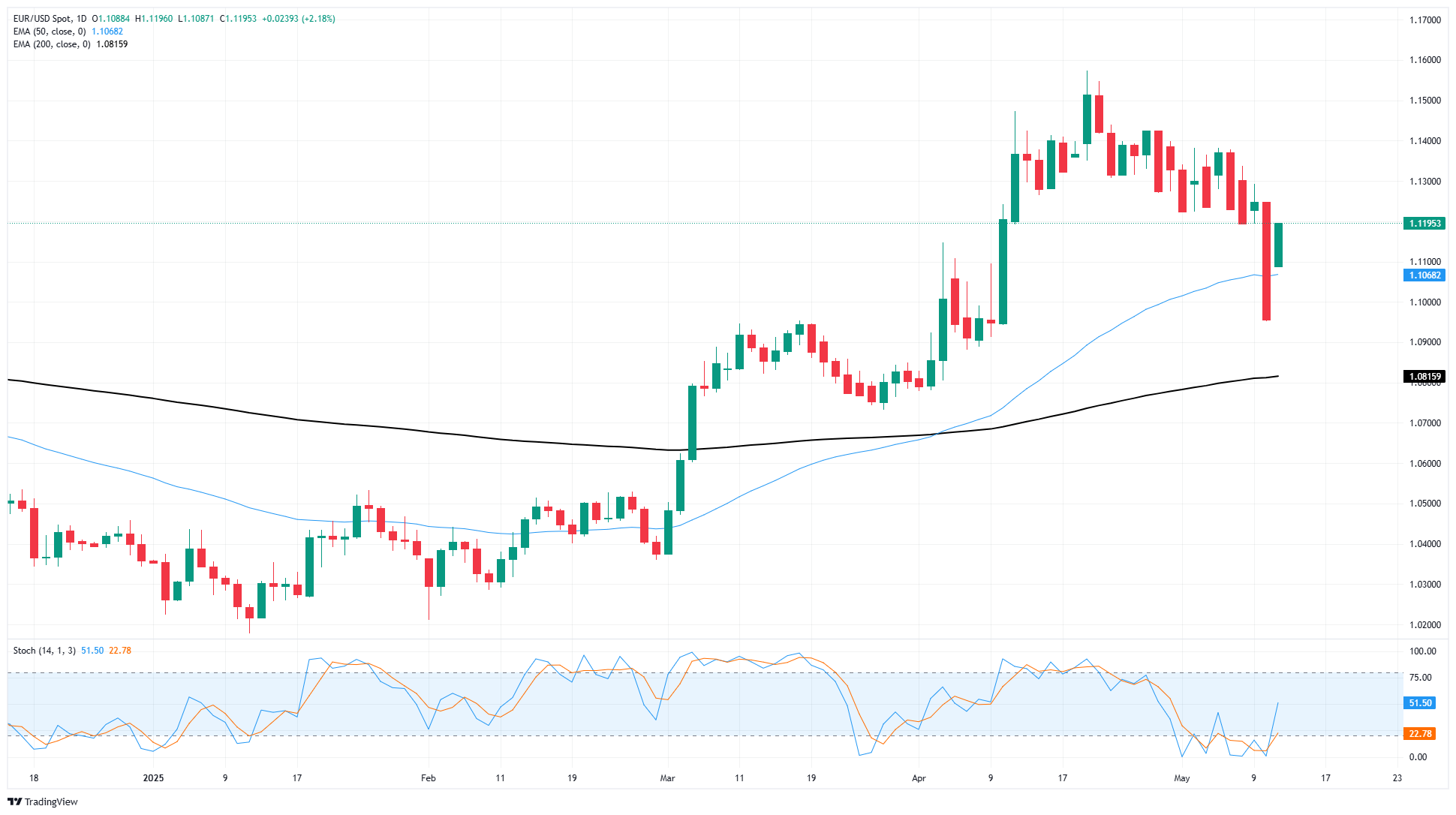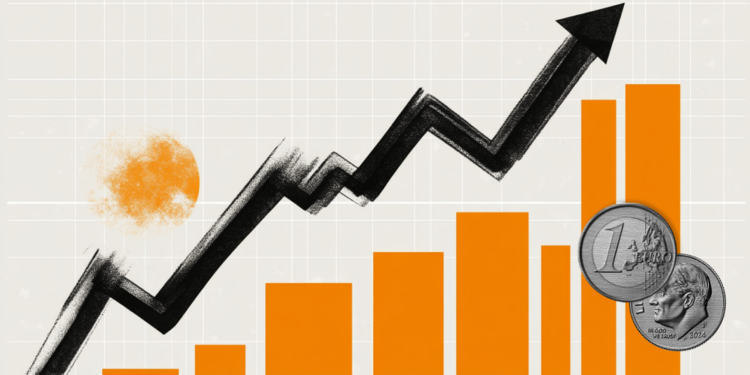- EUR/USD inched back toward the 1.1200 handle amid general USD weakness on Tuesday.
- Market sentiment is climbing in the face of possible trade deals that will push the Trump administration away from its own tariff policies.
- EU GDP growth, US PPI and UoM Consumer Sentiment are the week’s key remaining datapoints.
EUR/USD rose on Tuesday, clawing back most of the week’s starting losses. The pair is now testing back into the 1.1200 handle, thanks to a general broad-market weakening in the Greenback than any particular bullish momentum bootstrapping Euro market flows.
Market response to the US Consumer Price Index (CPI) inflation was largely subdued on Tuesday. Investors remain optimistic that ongoing trade deal negotiations between the Trump administration and various parties will sustain positive sentiment, although all trade tariff concessions offered by the Trump team have been strictly temporary.
In the US, CPI inflation reduced slightly in April, reaching a new three-year low for annualized headline inflation. Nonetheless, the Trump administration’s approach of enforcing triple-digit tariffs on key trading partners is anticipated to have repercussions starting in May, leading market experts to expect this will be the last strong CPI report for some time.
German Harmonized Index of Consumer Prices (HICP) are due during Wednesday’s European market session, but the non-preliminary figures are unlikely to generate much interest. Pan-European Gross Domestic Product (GDP) figures for the first quarter are also due on Thursday, but median market forecasts are expecting the figures to print similar to the previous quarter.
On the US side, inflation figures for the US Producer Price Index (PPI) and the latest Consumer Sentiment Survey from the University of Michigan are scheduled for release in the latter part of the trading week. The US PPI inflation data will be published on Thursday, followed by important consumer sentiment figures on Friday.
EUR/USD price forecast
Markets pushed hard to muscle EUR/USD back over the 1.1200 handle on Tuesday, falling just shy of the key technical level. However, despite limited upside, the Fiber is back above the 50-day Exponential Moving Average (EMA) near 1.1070. Bullish momentum remains absent from the daily candlesticks, but technical oscillators are rolling over sharply from oversold territory, hinting at the potential for a bullish extension.
EUR/USD daily chart

Euro FAQs
The Euro is the currency for the 19 European Union countries that belong to the Eurozone. It is the second most heavily traded currency in the world behind the US Dollar. In 2022, it accounted for 31% of all foreign exchange transactions, with an average daily turnover of over $2.2 trillion a day.
EUR/USD is the most heavily traded currency pair in the world, accounting for an estimated 30% off all transactions, followed by EUR/JPY (4%), EUR/GBP (3%) and EUR/AUD (2%).
The European Central Bank (ECB) in Frankfurt, Germany, is the reserve bank for the Eurozone. The ECB sets interest rates and manages monetary policy.
The ECB’s primary mandate is to maintain price stability, which means either controlling inflation or stimulating growth. Its primary tool is the raising or lowering of interest rates. Relatively high interest rates – or the expectation of higher rates – will usually benefit the Euro and vice versa.
The ECB Governing Council makes monetary policy decisions at meetings held eight times a year. Decisions are made by heads of the Eurozone national banks and six permanent members, including the President of the ECB, Christine Lagarde.
Eurozone inflation data, measured by the Harmonized Index of Consumer Prices (HICP), is an important econometric for the Euro. If inflation rises more than expected, especially if above the ECB’s 2% target, it obliges the ECB to raise interest rates to bring it back under control.
Relatively high interest rates compared to its counterparts will usually benefit the Euro, as it makes the region more attractive as a place for global investors to park their money.
Data releases gauge the health of the economy and can impact on the Euro. Indicators such as GDP, Manufacturing and Services PMIs, employment, and consumer sentiment surveys can all influence the direction of the single currency.
A strong economy is good for the Euro. Not only does it attract more foreign investment but it may encourage the ECB to put up interest rates, which will directly strengthen the Euro. Otherwise, if economic data is weak, the Euro is likely to fall.
Economic data for the four largest economies in the euro area (Germany, France, Italy and Spain) are especially significant, as they account for 75% of the Eurozone’s economy.
Another significant data release for the Euro is the Trade Balance. This indicator measures the difference between what a country earns from its exports and what it spends on imports over a given period.
If a country produces highly sought after exports then its currency will gain in value purely from the extra demand created from foreign buyers seeking to purchase these goods. Therefore, a positive net Trade Balance strengthens a currency and vice versa for a negative balance.

